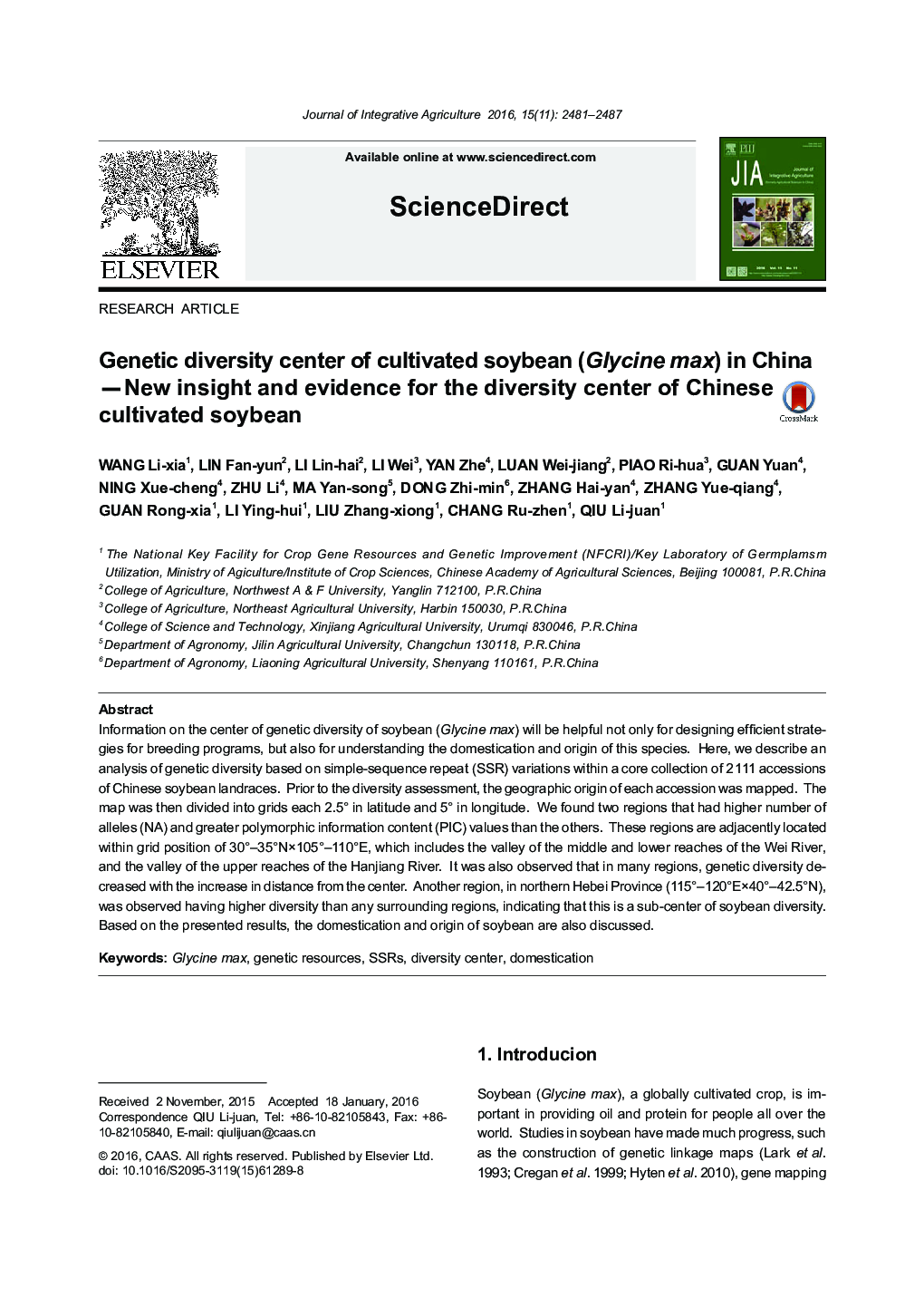| Article ID | Journal | Published Year | Pages | File Type |
|---|---|---|---|---|
| 8876202 | Journal of Integrative Agriculture | 2016 | 7 Pages |
Abstract
Information on the center of genetic diversity of soybean (Glycine max) will be helpful not only for designing efficient strategies for breeding programs, but also for understanding the domestication and origin of this species. Here, we describe an analysis of genetic diversity based on simple-sequence repeat (SSR) variations within a core collection of 2111 accessions of Chinese soybean landraces. Prior to the diversity assessment, the geographic origin of each accession was mapped. The map was then divided into grids each 2.5° in latitude and 5° in longitude. We found two regions that had higher number of alleles (NA) and greater polymorphic information content (PIC) values than the others. These regions are adjacently located within grid position of 30°-35°NÃ105°-110°E, which includes the valley of the middle and lower reaches of the Wei River, and the valley of the upper reaches of the Hanjiang River. It was also observed that in many regions, genetic diversity decreased with the increase in distance from the center. Another region, in northern Hebei Province (115°-120°EÃ40°-42.5°N), was observed having higher diversity than any surrounding regions, indicating that this is a sub-center of soybean diversity. Based on the presented results, the domestication and origin of soybean are also discussed.
Related Topics
Life Sciences
Agricultural and Biological Sciences
Agricultural and Biological Sciences (General)
Authors
Li-xia WANG, Fan-yun LIN, Lin-hai LI, Wei LI, Zhe YAN, Wei-jiang LUAN, Ri-hua PIAO, Yuan GUAN, Xue-cheng NING, Li ZHU, Yan-song MA, Zhi-min DONG, Hai-yan ZHANG, Yue-qiang ZHANG, Rong-xia GUAN, Ying-hui LI, Zhang-xiong LIU, Ru-zhen CHANG, Li-juan QIU,
